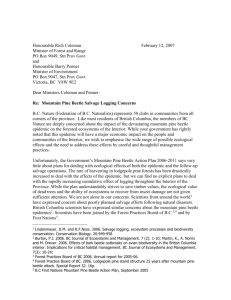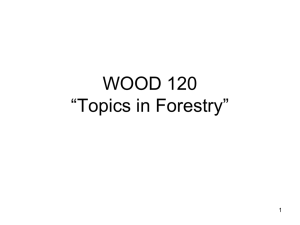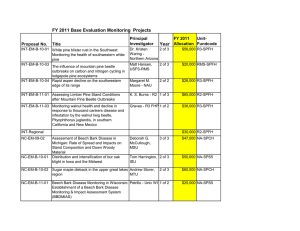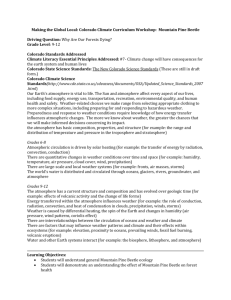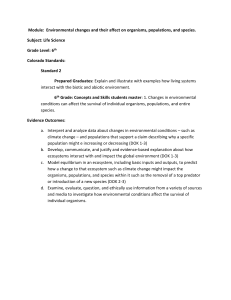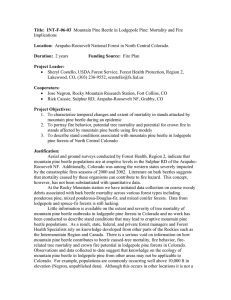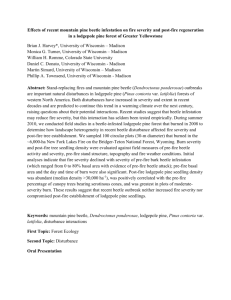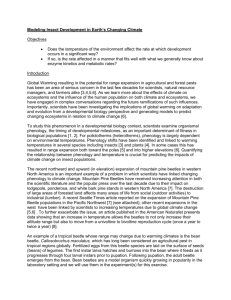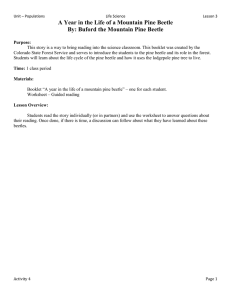pinebeetlefirestudy - University of Colorado Boulder
advertisement
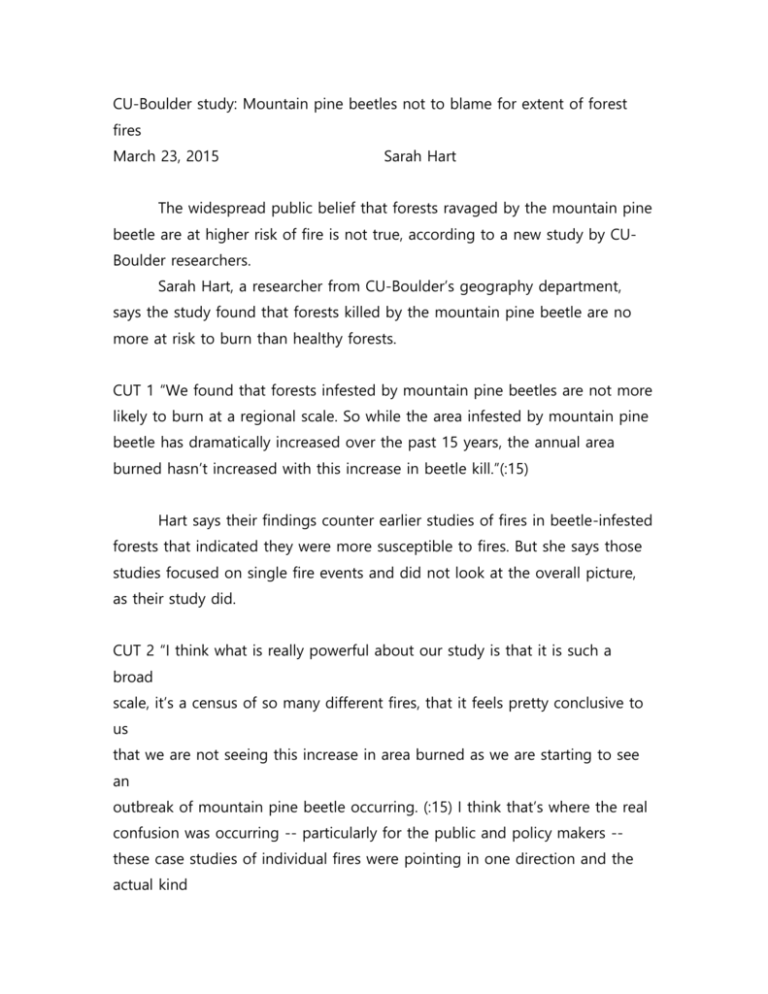
CU-Boulder study: Mountain pine beetles not to blame for extent of forest fires March 23, 2015 Sarah Hart The widespread public belief that forests ravaged by the mountain pine beetle are at higher risk of fire is not true, according to a new study by CUBoulder researchers. Sarah Hart, a researcher from CU-Boulder’s geography department, says the study found that forests killed by the mountain pine beetle are no more at risk to burn than healthy forests. CUT 1 “We found that forests infested by mountain pine beetles are not more likely to burn at a regional scale. So while the area infested by mountain pine beetle has dramatically increased over the past 15 years, the annual area burned hasn’t increased with this increase in beetle kill.”(:15) Hart says their findings counter earlier studies of fires in beetle-infested forests that indicated they were more susceptible to fires. But she says those studies focused on single fire events and did not look at the overall picture, as their study did. CUT 2 “I think what is really powerful about our study is that it is such a broad scale, it’s a census of so many different fires, that it feels pretty conclusive to us that we are not seeing this increase in area burned as we are starting to see an outbreak of mountain pine beetle occurring. (:15) I think that’s where the real confusion was occurring -- particularly for the public and policy makers -these case studies of individual fires were pointing in one direction and the actual kind of physic-driven models were suggesting another direction.” (:29) Hart says policy makers should rely on science instead of perception when allocating funds to fight fires. The 2014 Farm Bill, for example, authorized $200 million to reduce the risk of wildfire in beetle-infested forests. If that money is spent on firefighter safety or protecting homes, that’s a smart investment, but if it’s for thinning a forest to decrease the chance of burning it’s probably not an effective strategy, says Hart. CUT 3 “The farm bill allocated all of these funds to treat areas across the West to reduce the risk of both bark beetle and other kind of biotic disturbances and then the risk of subsequent fire. (:13) But we just need to be smart in how we are allocating our funds and whether it is based on what the science is saying because if there is not really an increase in the area of burn then we need to be thinking about what we are trying to spend that money for.” Hart says news coverage from the 2012 High Park fire ignited her interest in studying the influence of pine beetle-ravaged forest on fires. That’s because many of the reports she heard were that the forest fire was burning more intensely due to extensive pine beetle kill in the region and she wanted to know if that was true or not. CUT 4 “I will tell you how this study started for me was that when the High Park fire was burning there was so much in the news about the High Park fire burning through mountain pine beetle killed forests, it is burning so much more intensely, it’s fueling the fire. You heard that a lot. (:15) And based on some of the previous studies that had been done where they’ve looked at burning conditions following outbreak in a subset of fires we really said this is an issue that needs to be addressed at a comprehensive broad scale.” (:28) For the study Hart says the research team used maps created by the U.S. Forest Service and superimposed areas burned over areas previously infested by mountain pine beetle for the three peak years of wildfire activity since 2002 across the western U.S. -CU-

